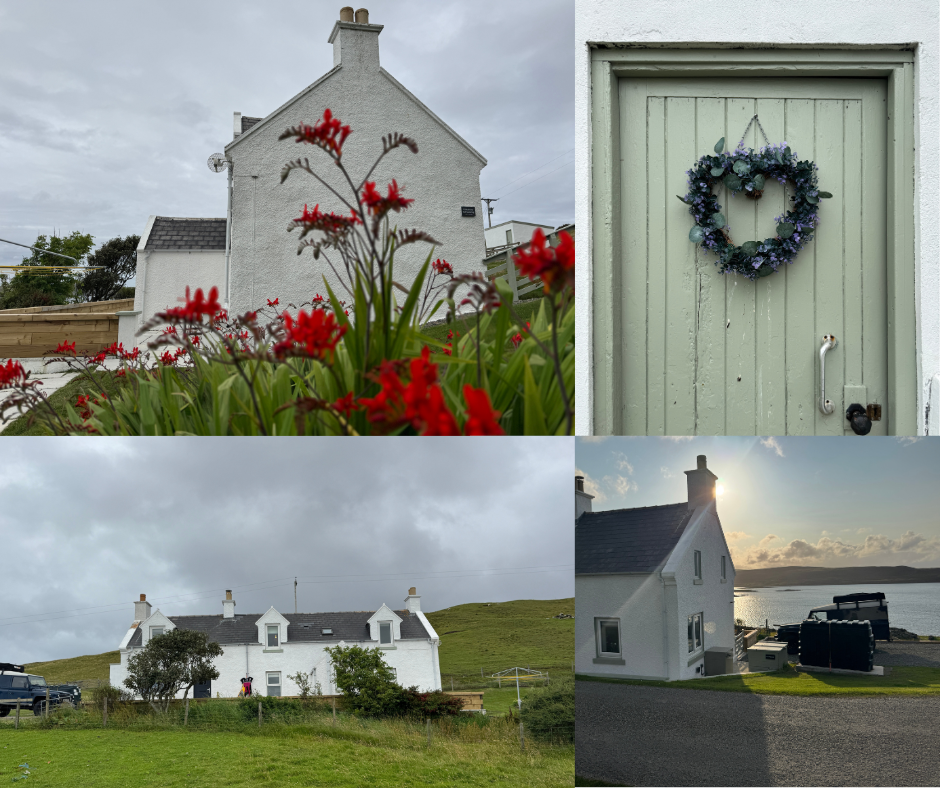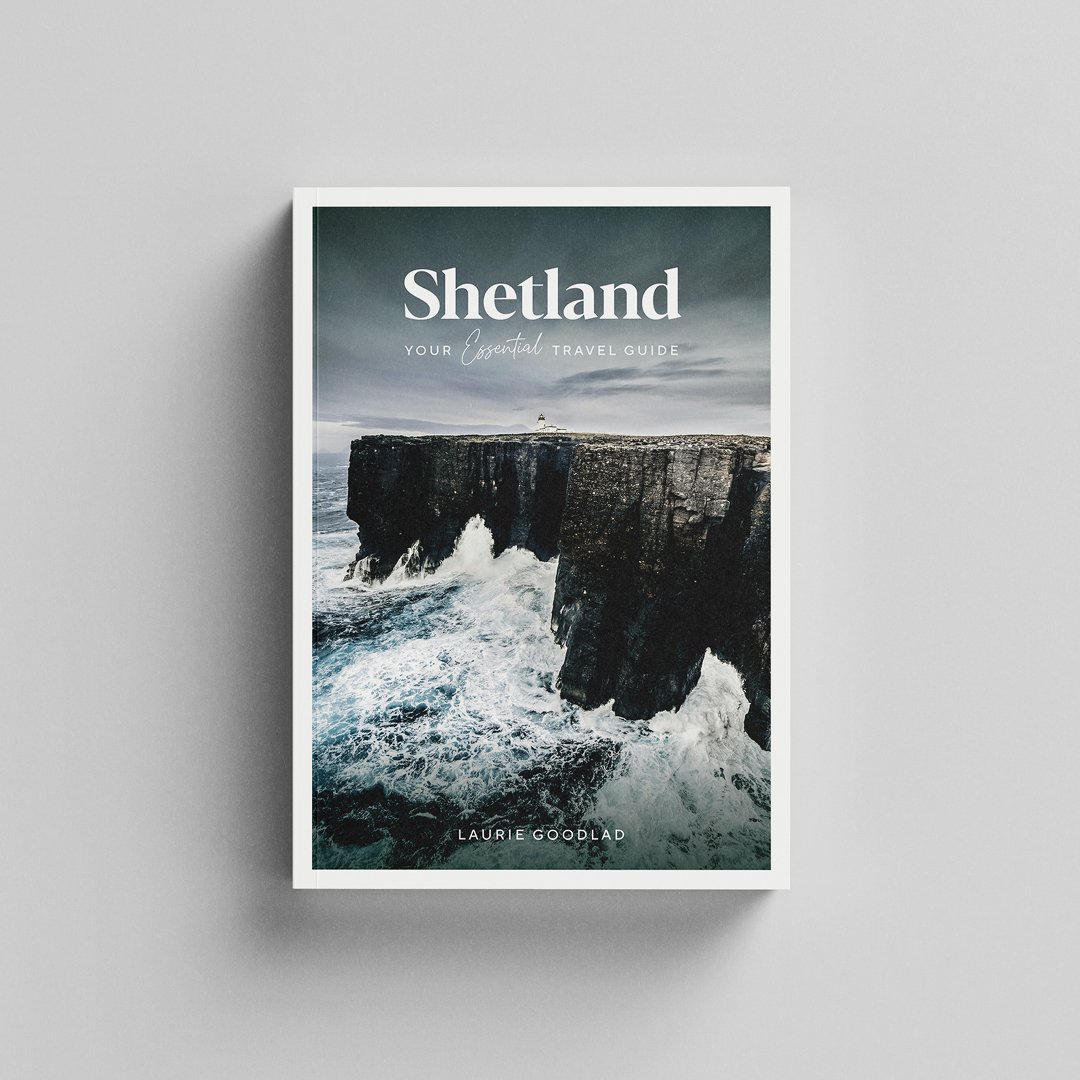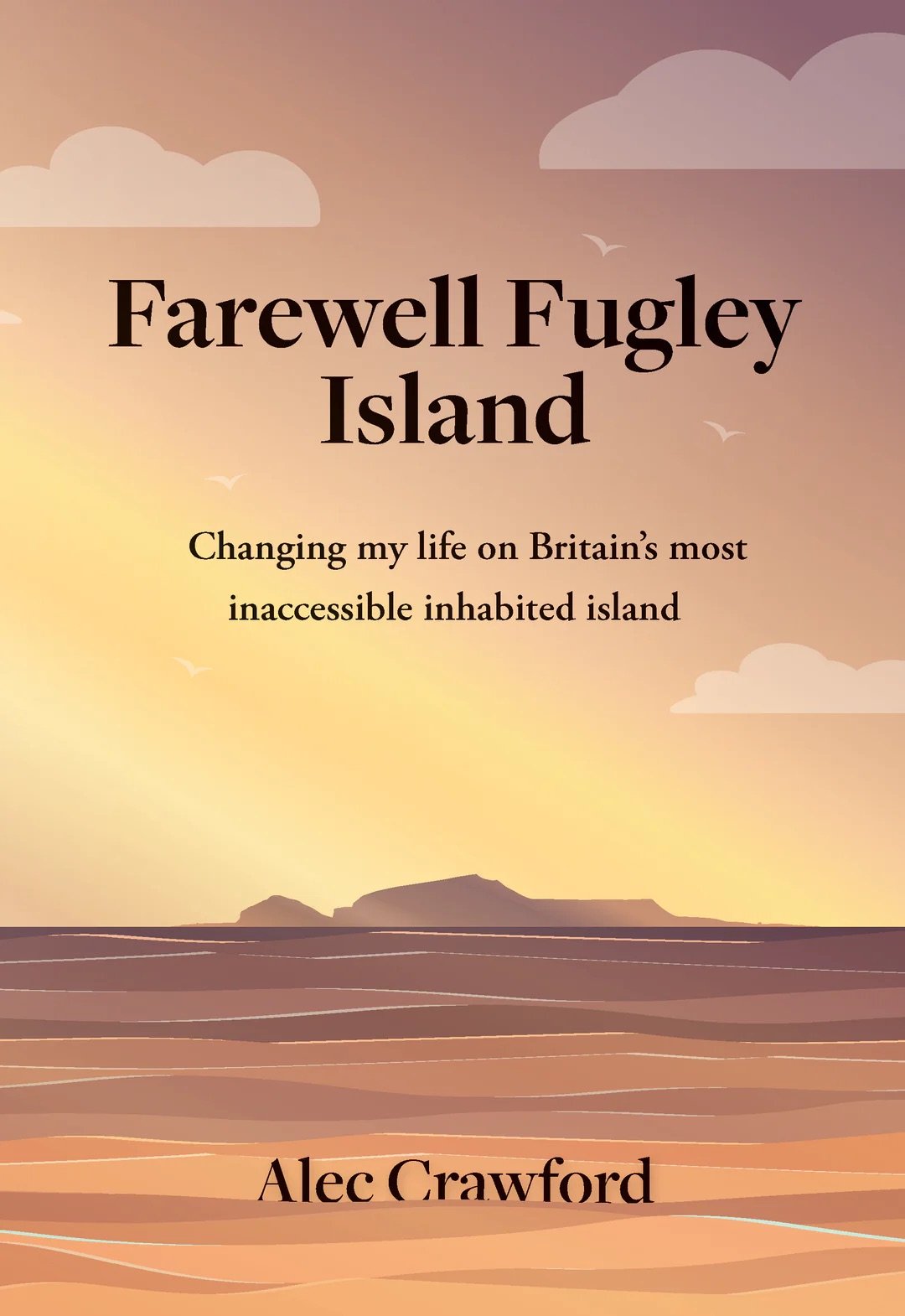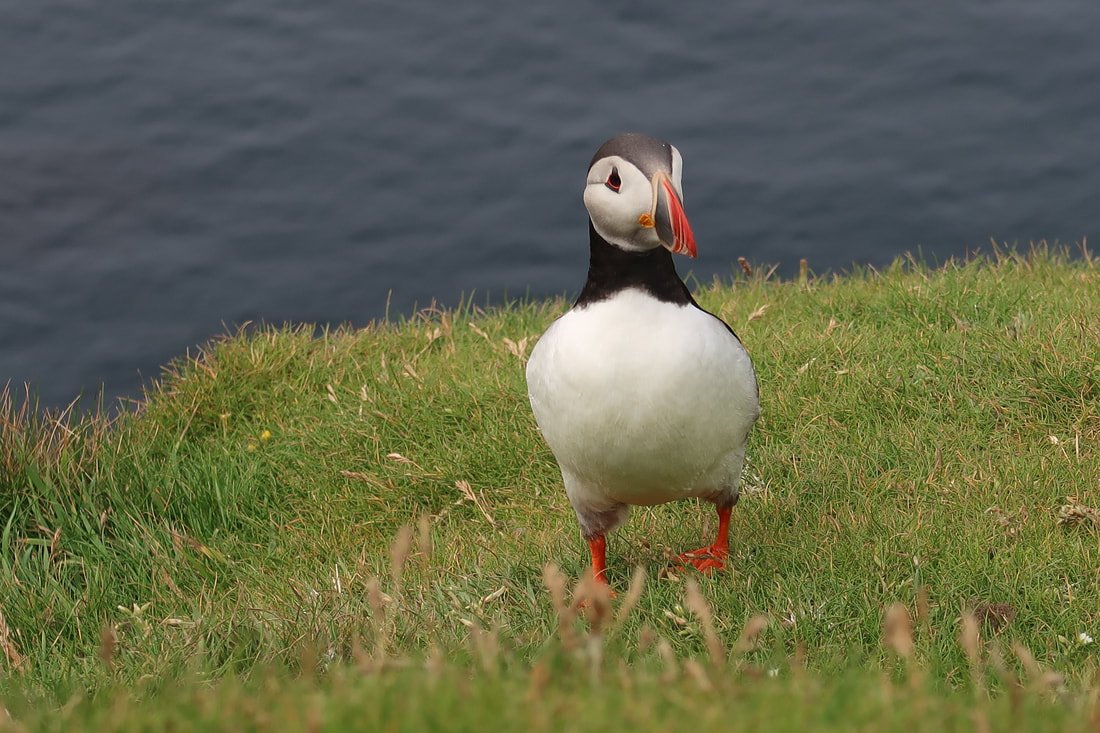Scottish travel blog from an islander’s perspective
Kirkabister self-catering: a review and itinerary for your stay
Nestled at the end of a winding country road just outside Vidlin, Kirkabister is a beautifully restored traditional cottage overlooking the sheltered waters of Vidlin Voe.
New to Shetland’s self-catering market, Kirkabister has been thoughtfully brought to life by owner Lynsey, whose attention to detail is seen throughout.
Sleeping up to eight guests, Kirkabister is ideal for families or groups looking to make the most of their Shetland holiday. Warm, welcoming, and rich in story, it’s more than a place to stay – it’s a home to return to. Read on for a full travel itinerary.
7 things you should know about Shetland’s history
Think Shetland is just a remote outpost? Think again. This northern archipelago has been a vibrant crossroads of cultures and trade for centuries. Once a stronghold of the Viking world, Shetland remained under Norse rule until 1469 and still carries echoes of that legacy in its place names and dialect.
The islands have played host to everything from Hanseatic traders and Spanish Armada shipwrecks to Dutch spice merchants and WWII resistance missions like the daring “Shetland Bus.” Fishing has long been Shetland’s economic lifeblood, and even today, more fish are landed here than in the rest of the UK combined.
With its own dialect rooted in Old Norse (not Gaelic), a vast global diaspora, and archaeological finds dating back to Mesolithic times, Shetland’s history is anything but small or simple. Dive into its rich past and discover a place shaped by sea, survival, and cultural resilience.
A hike to the Mosquito plane crash site, Royl Field, Shetland
The Clift Hills are a series of low-lying hills (200-300 metres) that rise from Clift Sound. Royl Field (293m) is the largest of these hills and the second largest in Mainland Shetland (and the third largest in Shetland). During the Second World War, a de Havilland Mosquito Mk VII “DZ642” of the 627 Squadron, Royal Air Force, crashed on Royl Field on 22nd November 1944.
The Clift Hills dominate every area of the South Mainland. From Burra to the west, they rise steeply from the sea below, creating a ‘wall’ between east and west. In summer, low clouds and fog often threaten to spill over the hills from the east. When the South Mainland lies shrouded in a blanket of mist, the sun usually shines to the west, the hills providing a barrier against the encroaching sea fog.
A guide to Shetland’s museums & heritage centres
Despite its relatively small size, Shetland has an incredible number of cultural heritage centres, supported by a willing army of volunteers who are passionate about recording the past, telling and sharing Shetland’s history, and celebrating the stories and folklore of the islands. Shetland has a strong storytelling tradition, and much of its cultural heritage has been preserved, meaning there’s a vast swathe of information to be explored. It’s perhaps therefore not surprising that for a community so passionate about its heritage, and one steeped in thousands of years of human history, that there are so many museums and heritage centres to explore.
Smaller community museums and heritage centres offer unique and detailed insights into individual communities – from the fascinating links to the wider world and entrepreneurial people who made their mark on the international stage, to the individual communities and the details of what shaped them.
Shetland’s contribution to modern medicine
Shetlanders have always had an entrepreneurial spirit, and a make-do-and-mend attitude that has allowed them to thrive and the 18th and 19th centuries saw some of Shetland’s greatest contributions to modern medicine.
In the 18th century, smallpox would tear through communities here, killing up to one third of the population, and one man, John Williamson, made a tremendous contribution to the islands, saving thousands of lives in the process.
John Williamson, better known as Johnnie Notions, was a self-taught man. A seaman and weaver to trade, he had a keen interest in medicine. He lived in the North Mainland at a time when smallpox often ripped through communities, brought in by seamen.
Shetland, Your Essential Travel Guide
After years of meticulous planning, research, and exploration, we are thrilled to announce the forthcoming release of our travel guide to Shetland. With stunning colour photographs and more than 250 pages brimming with useful information and insider tips, Shetland, Your Essential Travel Guide, is a labour of love, born from a shared dedication to showcasing the islands' natural beauty, intriguing history, and vibrant community life.
Foula’s Festive traditions & a guide to visiting
Lying about 20 miles west of Shetland, Foula is one of the UK’s most remote islands, and arguably the most isolated of any island in the UK. With a population of about 35, many thousands of birds, and five square miles to explore, Foula has an ‘edge of the world’ feel and will leave a lasting impression on those who visit.
Sitting alone in the vast, often unforgiving expanse of the North Atlantic, Foula looms from the horizon and is visible on a clear day from most parts of Shetland’s west coast. Its looming silhouette represents the last outpost of the UK, a final frontier. Echoing noisily with the sound of hundreds of thousands of seabirds in summer, and hard to access in winter as its name suggests – the word Foula comes from the Old Norse Fugley, meaning ‘bird island.’
Spine-tingling tales from Lerwick
With Hallowe’en upon us, I wanted to take a look at some of the spine-tingling and tragic tales from Lerwick. Last year, I explored Shetland’s haunted places, and this year, I wanted to focus on our capital town, Lerwick. Lerwick grew from the 1600s with Dutch fishermen coming here every summer to begin their summer herring fishery. The first mention of Lerwick came in 1625 when the lawmakers in Scalloway expressed concern about the lawlessness displayed in Lerwick, where smuggling, drinking, theft, assault and prostitution were cited as grounds to raze Lerwick to the ground.
Hiking Papa Stour’s dramatic west coast
A mile offshore from Sandness, accessible several times a week by ferry from West Burrafirth, is Papa Stour, known locally as Papa. The name comes from the Old Norse language, meaning ‘the great island of the priests’. The island is geologically fascinating, formed from volcanic ash and lava, which is a real gift to hikers seeking the drama, allure and breathtaking vistas offered by the incredible coastline.
This fertile and lush island had a population of 382 in 1841, which has declined steadily over the past 40 years. Today, the 15 or so permanent residents no longer have a school or shop, and there are few facilities on the island for visitors beyond the Ferry Waiting Room and church, which is undergoing renovation. Despite this, Papa is an island that calls to be explored, offering endless hours of enjoyment along its rugged coastline. The main settlement centres around the ferry harbour on the fertile east coast of the island at Housa Voe.
Book Review: The Salt Roads: How Fish made a Culture by John Goodlad
John’s perspective is unique in a modern socio-political context; he can look to the past for lessons while keeping a firm eye on the horizon and the future. He is neither bogged down in the past nor blinkered by the present. Much of what he discusses has a subtly woven political thread, hinting at his personal views and politics, yet they are never jarring or out of context. He has an innate ability to weave everything back to the fishing – an indication that this industry is fundamental to the very survival of our island communities.
Review: Shorehaven, Burrafirth, Unst review and itinerary for your stay
Shorehaven, where we were to spend the weekend, dates back to 1854 when Hermaness Lighthouse was built to aid navigation. Clinging to the hostile slopes of Muckle Flugga, a rocky outcrop off the north coast of Unst, Britain's most northerly lighthouse still shines a guiding light across the water to those at sea – Shorehaven forms part of the story of this iconic lighthouse.
A walk to Levenwick Broch in Shetland’s South Mainland
The spectacular ruins of Levenwick Broch, one of around 120 known broch sites in Shetland, has always intrigued me, and I’m ashamed to say that, after driving up and down the A970 hundreds – if not thousands – of times, It’s taken me 35 years to get there.
Up Helly Aa – top tips for enjoying Shetland’s festival of fire
Throughout Shetland, from January to March, the islands celebrate the festival of Up Helly Aa, with 12 Fire Festival and Up Helly Aa celebrations punctuating the darkness of winter with fiery processions, Viking dress and the world-renowned all-night parties that follow the burning of a Viking longship.
Christmas and New Year in Shetland past
In a few days time, just as we are taking down the Christmas decorations, and boxing them up for another year, Foula, our most westerly island will celebrate Christmas.
In the past, Christmas in Shetland meant something very different; we even held it on a different day. Known as Yule, it was a time of celebration and tradition, much of it stemming from pagan rituals and beliefs.
Today, Foula is one of the last places to celebrate the old calendar dates for Christmas and New Year celebrations, on the 6th and 13th of January.
Shetland’s haunted places
Tomorrow is hallowe’en, that time of the year when the veil between this world and the next is at its thinnest, and we can expect to experience the most paranormal activity. Shetland had its own unique blend of hallowe'en tradition influenced by Christianity, with its roots firmly placed in old pagan customs.
Orkney’s lesser-known Neolithic sites
Orkney is perhaps best-known for its mind-blowing Neolithic archaeology that continues to rewrite much of what we know about prehistoric Britain, so much so that, in 1999, UNESCO designated World Heritage status to what has colloquially become known as the Heart of Neolithic Orkney.
A day in Whalsay with the Heritage Centre and friends
Symbister Harbour, Whalsay Every great adventure starts with a boat, surely? It certainly feels like that as you dart north, rushing to make the ferry on time, watching the clock anxiously and praying you don't meet a tractor en route.The Whalsay ferry has an altogether different feel to the North Isles ferries; the journey is longer, and booking is strongly recommended if you want to ensure you arrive – and depart – on the ferry you've chosen. It also has a more 'Shetland' f [...]
Peerie Bugarth self-catering holiday home; an itinerary for your Yell stay.
The beautiful Peerie Bugarth, a gem of a property available for holiday let in Mid Yell I often drive past traditional Shetland crofthouses and wonder what they’re like inside. These are buildings that have fascinated me since I was little. Their simple lines, symmetry, and the way they bed into the landscape almost seamlessly continues to inspire my imagination in the same – perhaps less visually attractive way – that they continue to inspire artists and poets to commi [...]
Book Review – The Sandness Story
Sandness is the most westerly frontier of Mainland Shetland. It has the distinct feeling of being an island rather than part of the Mainland due to its relative geographical isolation from Lerwick. The boundaries of Sandness are clear and the community has the same tight-knit feel that you would expect to find on any of the outlying islands, where a bond of community exists that has, in many ways, been lost from the rest of Mainland Shetland.Ian Tait describes Sandness’ position w [...]
Book review – Old Lerwick: Lanes and Lodberries
Old Lerwick Old Lerwick: Lanes and Lodberries by Douglas Sinclair is the long-anticipated follow on from Old Lerwick: People and Places published in 2017. Douglas Sinclair is a Lerwegian and historian who grew up in the historic south end of Lerwick and has spent most of his life living in the heart of Lerwick, immersing himself in the history, the people and the places. He has dedicated much of his adult life to unearthing and telling the stories of the town – in fact if you&rsquo [...]
More about Shetland
Shetland is in my blood. Visit my blog for local insights, tips and advice.


















































Nestled at the end of a winding country road just outside Vidlin, Kirkabister is a beautifully restored traditional cottage overlooking the sheltered waters of Vidlin Voe.
New to Shetland’s self-catering market, Kirkabister has been thoughtfully brought to life by owner Lynsey, whose attention to detail is seen throughout.
Sleeping up to eight guests, Kirkabister is ideal for families or groups looking to make the most of their Shetland holiday. Warm, welcoming, and rich in story, it’s more than a place to stay – it’s a home to return to. Read on for a full travel itinerary.